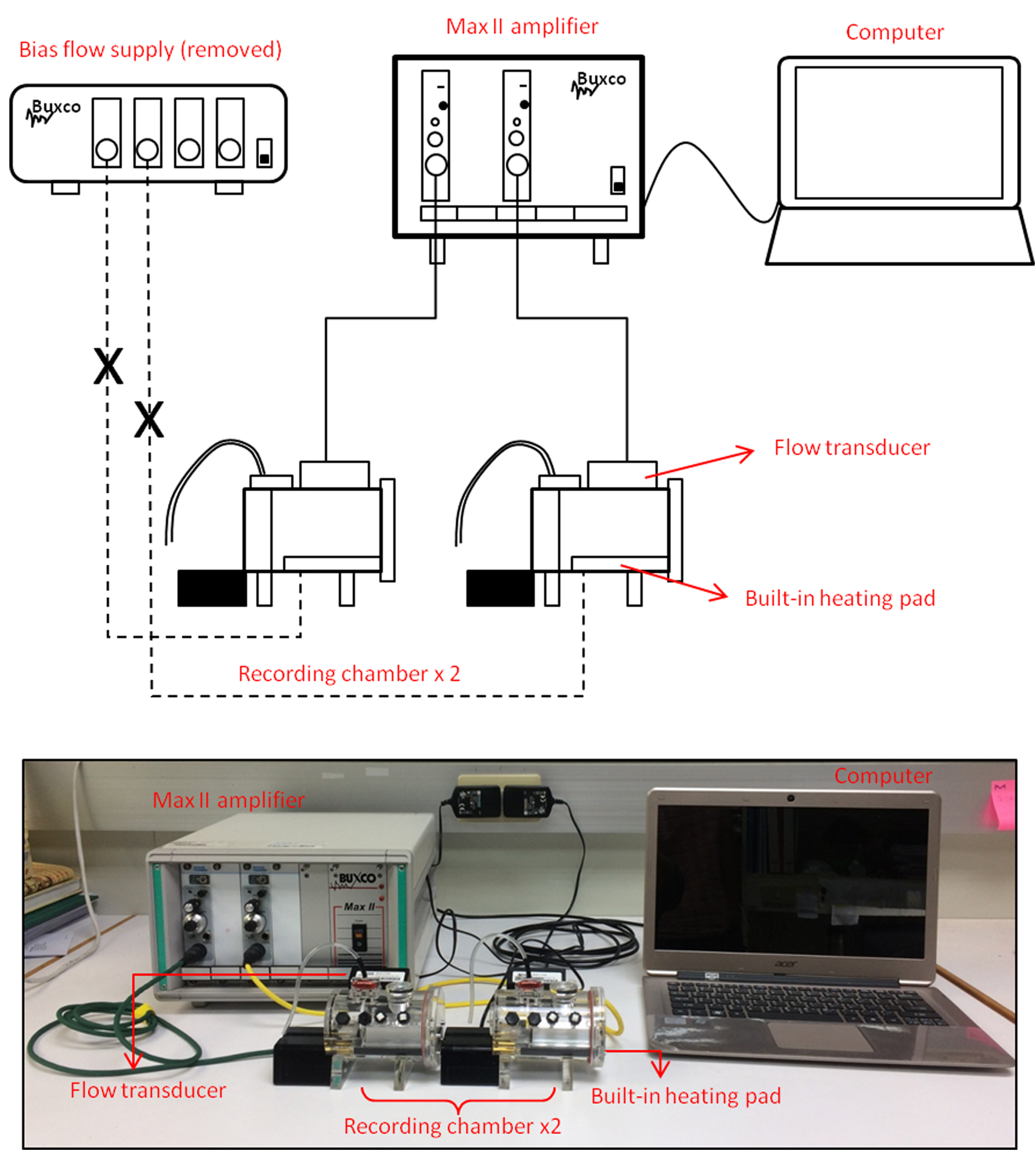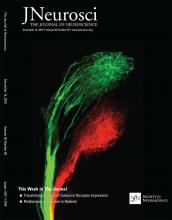- EN - English
- CN - 中文
Modification and Application of a Commercial Whole-body Plethysmograph to Monitor Respiratory Abnormalities in Neonatal Mice
改造商业全身体积描记器并应用于监测新生小鼠的呼吸异常
发布: 2017年06月20日第7卷第12期 DOI: 10.21769/BioProtoc.2343 浏览次数: 9104
评审: Pengpeng LiMurugappan SathappaLU HAN
Abstract
Proper breathing is essential for mammals to acquire oxygen after birth and requires coordinated actions among several tissues, including diaphragm, intercostal muscles, trachea, bronchi, lung and respiration-regulating neurons located in the medulla oblongata. Genetically modified mice that die early postnatally may have respiratory defects caused by maldevelopment of any one of these tissues (Turgeon and Meloche, 2009). Because of the small body size of neonatal pups, whole-body plethysmography can be used to monitor their respiratory activities. In this protocol, we modified the commercial whole-body plethysmograph by increasing metal filters in the pneumotach, connecting an extension tube to the pneumotach and removing the bias flow supply. With these modifications, the sensitivity of this device is significantly increased to enable the detection of rhythmic respiration in neonatal mice as early as postnatal day 1 (P1).
Keywords: Neonatal mice (新生小鼠)Background
Several labs have used home-made or custom-built plethysmograph devices to identify respiratory failure in genetically modified neonatal mice (Nsegbe et al., 2004; Crone et al., 2012). However, for researchers who are novices in this field and want to investigate the cause of neonatal lethality in mice, a commercial whole-body plethysmograph (WBP, Buxco system, DSI) is a reasonable choice.
When we first set up this system to monitor respirations of P0 mice, the respiratory activities in C57BL/6 newborns were most of the time undetectable until mice reached 3 days old. Because the WBP measures the pressure changes within the animal chamber that are due to inspired air humidified and heated by an animal’s lung during breathing, increasing the detection sensitivity of this device was the only way to monitor respiration of C57BL/6 neonates before P3.
In this protocol, we share our experience in modifying this system to reliably detect rhythmic respiration in C57BL/6 neonatal pups as early as P1 and possibly P0. Once the recorded traces are obtained, several parameters calculated by the FinePointe software are useful for exploring respiratory abnormalities in mice who do not die of cyanosis due to severe respiratory failure right after birth (Lai et al., 2016).
Materials and Reagents
- P0 and P3 C57BL/6 litter (C57BL/6) (THE JACKSON LABORATORY, catalog number: 000664 )
- ICR foster dams [Crl:CD-1 (ICR), Charles River, strain code: 022]
Equipment
- Mouse pup WBP (DATA SCIENCES INTERNATIONAL, Buxco system; Figure 1) with:
- Max II Amplifier (DATA SCIENCES INTERNATIONAL, Buxco, model: MAX2275 )
- Recording chambers (DATA SCIENCES INTERNATIONAL, Buxco, model: PLY4241 ), ~30 ± 1 °C with built-in heating pad on

Figure 1. Modified setup for the Buxco mouse-pup whole-body plethysmograph
- Flow transducer (DATA SCIENCES INTERNATIONAL, Buxco, model: TRD5700 )
- Small rodent bias flow supply (DATA SCIENCES INTERNATIONAL, Buxco, model: B04-BFL0100 , for mouse pup)
- Extension tube (length: 14 cm; internal/external diameter: 2.6/3 mm)
- Metal filters (DATA SCIENCES INTERNATIONAL, Buxco, model: HDW1514 )
- Hybridization oven (GE Healthcare, model: RPN2511E )
Software
- FinePointe software (Buxco system, DSI)
Procedure
文章信息
版权信息
© 2017 The Authors; exclusive licensee Bio-protocol LLC.
如何引用
Readers should cite both the Bio-protocol article and the original research article where this protocol was used:
- Lai, Y. and Huang, Y. (2017). Modification and Application of a Commercial Whole-body Plethysmograph to Monitor Respiratory Abnormalities in Neonatal Mice. Bio-protocol 7(12): e2343. DOI: 10.21769/BioProtoc.2343.
-
Lai, Y. T., Su, C. K., Jiang, S. T., Chang, Y. J., Lai, A. C. and Huang, Y. S. (2016). Deficiency of CPEB2-confined choline acetyltransferase expression in the dorsal motor nucleus of vagus causes hyperactivated parasympathetic signaling-associated bronchoconstriction. J Neurosci 36(50): 12661-12676.
分类
生物物理学 > 生物工程 > 体积描记法
您对这篇实验方法有问题吗?
在此处发布您的问题,我们将邀请本文作者来回答。同时,我们会将您的问题发布到Bio-protocol Exchange,以便寻求社区成员的帮助。
Share
Bluesky
X
Copy link











